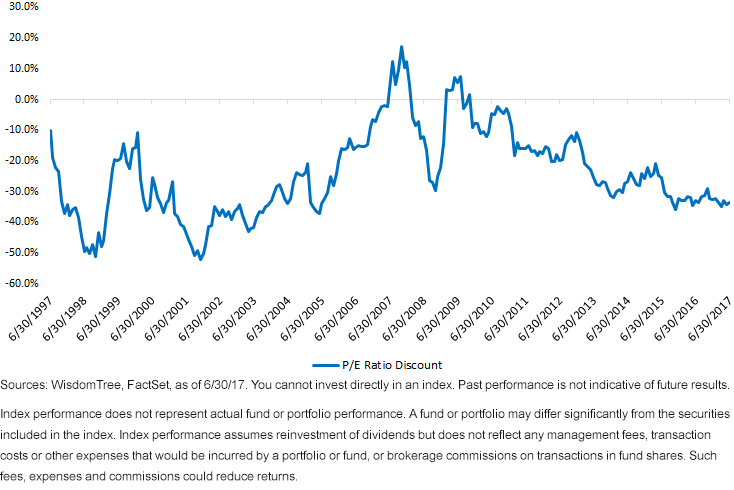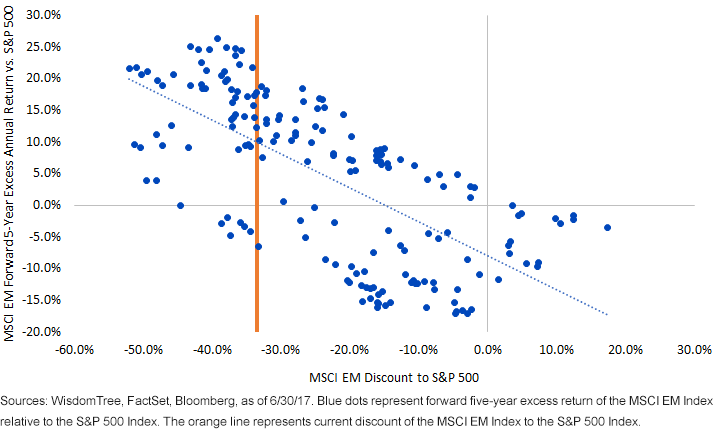
Given several years of diverging returns between U.S. and emerging market (EM) equities, it should come as no surprise that EM equities currently trade at a discount to U.S. equities. The size of that discount, however, is something that we feel is not being fully appreciated by many investors.
As of June 30, the MSCI Emerging Markets Index traded at a 14.6x price-to-earnings (P/E) ratio, while the S&P 500 Index was at 21.9x earnings—a 33.5% discount.1 This is one of the largest valuation gaps between the two gauges since 2005.

Remember the Last Time This Happened?
Investors who allocated to EM in 2005 likely recall those days fondly. Starting in 2005, the MSCI EM Index began a three-year stretch of returning at least 32% per year—significantly higher than the 28.2% cumulative return provided by the S&P 500 over that same time.2
Surely hindsight is 20/20, but if investors had known then what they know now, odds are they would have taken advantage of the valuation opportunity presented to them by backing up the truck and buying EM in droves.
Fortunately for investors who missed the opportunity in 2005, they may be in luck right now.
Historical Precedent of Outperformance
On a monthly basis over the last 20 years, there have been 61 instances where the valuation gap between the MSCI EM Index and the S&P 500 has been as large as it currently stands. Following these instances, the next several years have tended to provide stellar returns for EM investors:

Don’t Forget the Other Part of P/E
Granted, valuation alone is not a catalyst, but a significant one is just picking up steam. Corporate earnings in EM collapsed starting in 2011, bottomed out at the start of 2016 and finally turned positive at the start of 2017. Given the long-awaited delivery of earnings growth (and with forward earnings expectations rapidly rising3), we believe that this could help keep EM valuations relatively low, even if stock prices continue to rally.
















